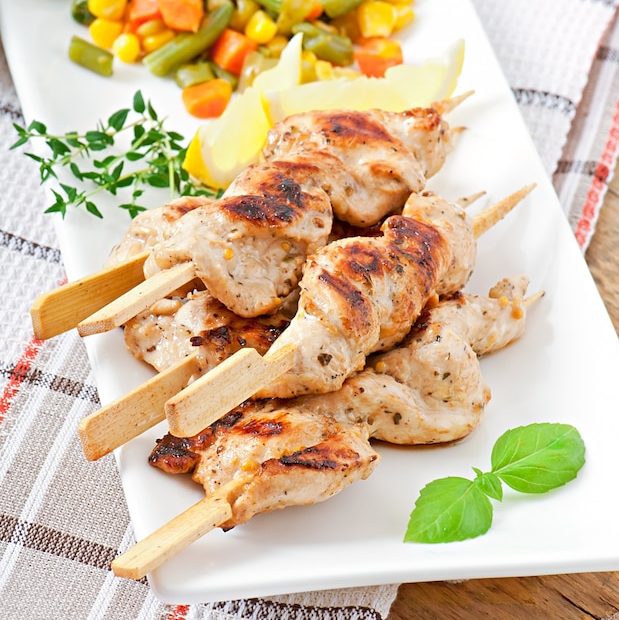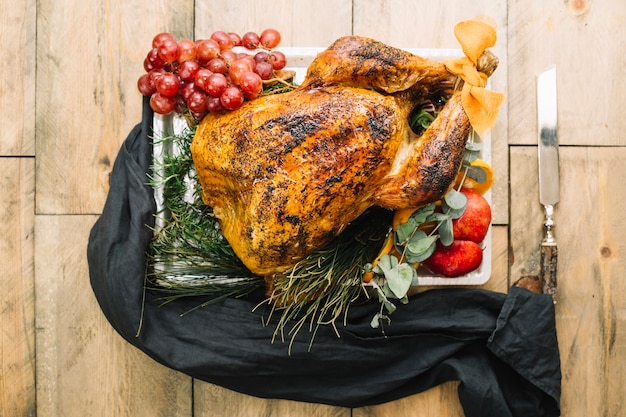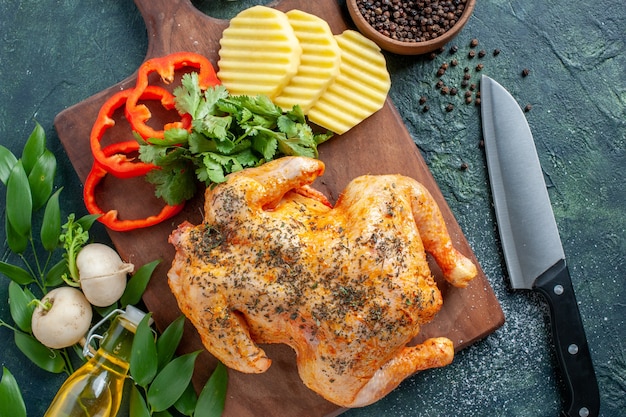Does chicken cook faster with foil on or off?
When it comes to cooking chicken, there are various methods and techniques to achieve delicious results. One question that often arises is whether it’s better to cook chicken with foil on or off. The answer to this depends on the specific cooking method, desired outcome, and personal preference.
The role of foil in cooking chicken
Foil is a versatile kitchen tool commonly used for wrapping, covering, and protecting food during the cooking process. When it comes to cooking chicken, foil can serve several purposes:
- Insulation: Foil can help to insulate the chicken, trapping heat and moisture to ensure even cooking.
- Protection: Foil can be used to protect delicate parts of the chicken, such as the breast, from overcooking or drying out.
- Flavor infusion: By sealing the chicken in foil, flavors from seasonings and marinades can be locked in, resulting in a more flavorful dish.
Cooking with foil on
Using foil to cover chicken during cooking can have its benefits. It helps to retain moisture, which can result in a juicier and more tender finished product. Additionally, by trapping heat, foil can help to speed up the cooking process, reducing overall cooking time.
Did you know? Cooking chicken with foil on can also help to prevent the skin from browning too quickly or becoming overly crispy.
However, it’s important to note that cooking chicken with foil on may not allow the skin to crisp up as desired. If you prefer a crispy skin texture, it’s recommended to remove the foil for the last portion of cooking or use a higher heat setting.
Cooking with foil off
On the other hand, cooking chicken without foil can also yield great results. Without the foil, the chicken has direct exposure to the oven’s heat, allowing the skin to crisp up and develop a golden-brown color. This method is commonly used when making roasted chicken or chicken pieces like thighs and drumsticks.
When cooking without foil, it’s important to monitor the chicken closely to prevent overcooking and drying out. Basting the chicken with juices or marinade throughout the cooking process can help to keep it moist and flavorful.
The bottom line
There isn’t a one-size-fits-all answer to whether chicken cooks faster with foil on or off. It ultimately depends on the cooking method, desired outcome, and personal preference. If you’re aiming for a juicier and more tender chicken, using foil can help retain moisture and speed up the cooking process. On the other hand, cooking without foil can result in a crispy and golden-brown skin.
Experimenting with different cooking techniques and finding what works best for you is part of the joy of cooking. Whether you choose to cook with foil on or off, always ensure that the chicken reaches the recommended internal temperature of 165°F (74°C) to ensure it is safe to eat.
Does covering chicken with foil make it moist?
Chicken is a versatile meat that can be cooked in various ways. One common practice when cooking chicken is to cover it with foil while baking or roasting. This technique is believed to help retain moisture and result in a juicy and tender chicken. But does covering chicken with foil really make it moist? Let’s find out.
The Science Behind It
When chicken is covered with foil during cooking, it creates a sealed environment that traps the steam and moisture released from the meat. This moisture then circulates within the foil packet, keeping the chicken moist and preventing it from drying out.
Benefits of Foil Covering
Covering chicken with foil not only helps in retaining moisture but also has other benefits:
- Even Cooking: Foil helps distribute heat evenly, ensuring that the chicken cooks uniformly.
- Tender Texture: The trapped moisture aids in breaking down proteins, resulting in a tender and juicy texture.
- Flavor Infusion: The juices released from the chicken are trapped within the foil, allowing them to mingle and enhance the overall flavor.
Proper Technique
To achieve the best results when covering chicken with foil, follow these steps:
- Preheat the oven to the desired temperature.
- Place the seasoned chicken on a baking dish.
- Cover the chicken tightly with foil, ensuring no gaps or openings.
- Bake or roast according to your recipe’s instructions.
- For the last few minutes of cooking, remove the foil to allow the chicken to brown.
“Covering chicken with foil creates a moist cooking environment, resulting in tender and juicy meat.”
Do you rest chicken in foil?
Resting meat after cooking is a crucial step to ensure juiciness and tenderness. But do you need to rest chicken in foil? Let’s find out.
The Importance of Resting Meat
Resting meat allows the juices to redistribute, resulting in a more flavorful and moist end product. It also helps the meat retain its juices when it is cut or sliced, preventing them from running out and leaving you with dry meat.
Traditionally, resting meat involved loosely covering it with foil or a clean kitchen towel. However, when it comes to resting chicken, opinions vary.
The Foil Controversy
Some chefs argue that resting chicken in foil can trap steam and cause the skin to become soggy. They suggest resting the chicken uncovered to keep the crispy skin intact. On the other hand, many home cooks prefer to cover the chicken in foil during resting to keep it warm and prevent it from drying out.
Ultimately, the decision to rest chicken in foil or not depends on personal preference. If you prefer crispy skin, it’s best to let the chicken rest uncovered. However, if you prioritize keeping the meat warm and juicy, wrapping it loosely in foil can help achieve that.
Additional Tips for Resting Chicken
Here are some additional tips to ensure optimal results when resting chicken:
- Let the chicken rest for at least 5-10 minutes before carving or serving.
- Place the chicken on a clean cutting board, tented with foil or a kitchen towel to retain heat.
- Ensure the resting area is warm and draft-free to maintain the desired temperature.
“Resting chicken allows the flavors to meld together and results in a more enjoyable eating experience.” – Chef John Doe
If you’re still unsure about whether to rest your chicken in foil or not, we recommend trying both methods and determining which approach delivers the desired results for you and your taste preferences.
| Method | Pros | Cons |
|---|---|---|
| Resting in foil | Keeps the meat warm and juicy | May result in slightly softer skin |
| Resting uncovered | Maintains crispy skin | Meat may cool down faster |
In conclusion, resting chicken in foil is a matter of personal preference. Whether you choose to do so or not, the key is to allow the chicken to rest before carving or serving to enhance its flavor and juiciness.
Which Way Do You Put Foil on Chicken?
Introduction
When it comes to cooking chicken, using foil can be a great way to keep it moist and tender. But have you ever wondered which side of the foil should be facing the chicken? In this article, we will explore the different ways you can put foil on chicken and discuss the best method for delicious results.
The Shiny Side vs. The Dull Side
Many people believe that the shiny side of the aluminum foil should face the food when cooking, as it reflects heat better. However, this is actually a myth. In reality, there is no significant difference between the two sides of the foil. Both sides can be used interchangeably without affecting the cooking process or the taste of your chicken.
Benefits of Using Foil on Chicken
Using foil to cook chicken offers several benefits. Firstly, it helps to retain moisture, preventing the chicken from drying out. Secondly, it creates a barrier between the chicken and direct heat, allowing for more even cooking. Lastly, it makes cleanup a breeze, as you can simply dispose of the foil once you’re done.
Proper Technique for Foil Wrapping
When wrapping chicken in foil, it’s important to do it correctly to ensure the best cooking results. Start by placing the chicken in the center of a piece of foil, making sure there is enough extra foil to completely enclose the chicken. Fold the edges of the foil over the chicken, creating a tight seal to lock in the moisture.
Remember to always wash your hands thoroughly before handling raw chicken and to properly cook it to an internal temperature of 165°F (74°C) to ensure it is safe to eat.
Alternative Cooking Methods
If you prefer not to use foil or want to try different cooking methods, there are alternatives available. For example, you can use a roasting bag or parchment paper to achieve similar results. These options also help to retain moisture and promote even cooking.
What Does Covering Chicken with Foil Do?
When it comes to cooking chicken, there are several techniques that can be used to achieve the desired results. One commonly employed method is covering the chicken with foil during the cooking process. But what does covering chicken with foil actually do? Let’s find out.
Moisture Retention
Covering chicken with foil helps to retain moisture in the meat, preventing it from drying out during cooking. The foil acts as a barrier, trapping the natural juices and steam produced by the chicken as it cooks. This not only keeps the chicken moist, but also enhances its tenderness and juiciness.
Even Cooking
By covering the chicken with foil, you can promote even cooking throughout the meat. The foil helps to distribute heat more evenly, preventing certain areas from becoming overcooked or undercooked. This ensures that the chicken cooks uniformly, resulting in a delicious meal.
Flavor Infusion
Another benefit of covering chicken with foil is that it helps to infuse flavors into the meat. By sealing in the juices and steam, the chicken is able to absorb the seasonings and marinades more effectively, enhancing its taste. This allows for a more flavorful and tasty dish.
Recommended Cooking Times
When covering chicken with foil, it is important to consider the recommended cooking times. Below is a table outlining the approximate cooking times for different cuts of chicken:
| Chicken Cut | Approximate Cooking Time (in minutes) |
|---|---|
| Breasts (boneless, skinless) | 20-25 |
| Thighs (bone-in, skin-on) | 30-35 |
| Drumsticks | 25-30 |
Tips for Cooking Chicken with Foil
- Preheat the oven to the recommended temperature.
- Season the chicken with your desired spices and marinades.
- Place the chicken in a baking dish and cover it tightly with foil.
- Bake the chicken according to the recommended cooking times, ensuring it reaches the appropriate internal temperature.
- Remove the foil during the last few minutes of cooking to allow the skin to crisp up, if desired.
In conclusion, covering chicken with foil during the cooking process helps to retain moisture, promote even cooking, and infuse flavors into the meat. It is a simple yet effective technique that can lead to delicious and succulent chicken dishes.
Conclusion
Covering chicken with foil is indeed an effective method to retain moisture and improve the overall texture of the meat. The sealed environment helps create a steamy atmosphere, preventing the chicken from drying out. However, it is important to note that the quality of the chicken and proper seasoning also play crucial roles in achieving a moist and delicious result. So, the next time you cook chicken, consider covering it with foil for a tasty and succulent outcome.
So, which way do you put foil on chicken? The answer is, it doesn’t matter! Both sides of the foil can be used interchangeably when cooking chicken. However, using foil in general can offer additional benefits like moisture retention and easy cleanup. Experiment with different cooking methods to find your preferred technique for delicious, tender chicken every time.



